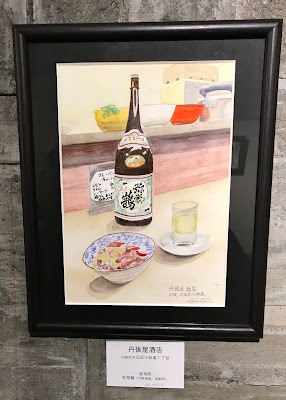Matsuri
「Through Multi-sighted Photographies」
祭り
「多視点からの写真を通して」
2024 February 10 (Sat) ~ 13 (Tues)
2024年2月10日(土) ~ 13日(火)
11:00 - 18:00
(last day / 最終日は 11:00 - 16:00)
JARFO Art Square
Kyoto, Japan
Gallery Info: https://jarfo.jp/jarfo
See the promo flyer: http://visualanthropologyofjapan.blogspot.com/2024/01/matsuri-photo-exhibition.html
English (英語の後に日本語の案内が表示されます):
Where to go, how to get there, and what to expect along the way...
JARFO Art Square
Higashiyama-ku, Furukawachō 545
605-0026 Kyōto
JARFO Art Square is 3 minutes away from the Tozai Line Higashiyama Station and 10 minutes away from the Keihan Sanjo Station.
Kyoto Tozai Line stations are largely accessible and wheelchair-friendly, with elevators, narrow gaps between platform and train, and no height differences at places like restrooms. At Higashiyama Station, take Exit 2. There are elevators and barrier-free restrooms inside the station available near Exit 2. The gallery is about 3 minutes away from the station. Upon reaching the street level, turn left. Turn left again when you reach the nearby shopping arcade. After the first intersection, the gallery will be on the right side.
Keihan Sanjo Station has elevators and a barrier-free restroom on the ticket gate level near the central exit (on the Osaka-bound side). You can transfer to the Tozai Line, but it is also easy to walk or roll (about 10 minutes) to the gallery from Sanjo. Walk/roll south on Sanjo Dori (opposite direction of the bridge) on the right side of the street until you get to the Furukawa shopping arcade. Turn right into the arcade. After the first intersection, the gallery will be on the right side. The gallery has a wide entrance and plenty of space inside. The gallery's restroom is not wheelchair accessible.
The photos will be A3 size color prints.
Available languages: Japanese, Japanese Sign Language (日本手話), English, French
日本語 (English directions are above):
どこに行くか、どうやってそこに行くか、そして途中で何を期待するか...
JARFO Art Square
〒605-0026
京都府京都市東山区古川町545
JARFO Art Squareは東西線東山駅から3分、京阪三条駅からは10分です。
京都東西線の駅は、エレベーターの設置、ホームと電車の隙間が狭い、トイレの高低差がないなど、バリアフリーで車椅子でも利用しやすい駅となっています。 東山駅2番出口を出てください。 駅構内2番出口付近にエレベーターとバリアフリートイレがあります。 ギャラリーは駅から約3分です。 エレベーターを出たら左折してください。 近くの商店街に出たら、再び左折します。 最初の交差点を過ぎた後、ギャラリーは右側にあります。
京阪三条駅は中央口(大阪方面)付近の改札階にエレベーターとバリアフリートイレがあります。 東西線に乗り換えることもできますが、三条からも徒歩や車椅子(約10分)で行くことができます。 三条通りの右側を古川商店街に向かって南(橋の反対側)に進み、アーケードを右折。 ギャラリーは最初の交差点を過ぎて右側にあります。 ギャラリーは入り口が広く、内部も広々としたスペースがあります。 ギャラリーのトイレは車椅子対応ではありません。
写真はA3サイズのカラープリントとなります。
対応言語:日本語、日本手話、英語、フランス語






























































